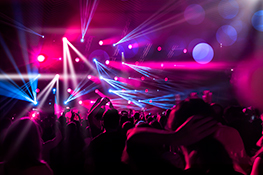Stage Lighting Design: Creating Visual Narratives Through Light
The Power of Illumination: Shaping Emotion and Story
Stage lighting is far more than simply illuminating a stage; it’s a powerful storytelling tool that shapes audience perception, guides their eyes, and evokes a spectrum of emotions. A skilled lighting designer understands this nuanced role, using light to craft visual narratives that complement and enhance the performance. This article delves into the art and science of stage lighting design, exploring techniques and considerations for creating truly memorable productions.
Understanding the Fundamentals: Light’s Properties and Effects
Before diving into complex designs, it’s crucial to grasp the fundamental properties of light. This includes understanding color temperature (the warmth or coolness of the light), intensity (brightness), saturation (purity of color), and the various qualities of light, such as hard-edged beams versus soft, diffused washes. Each property can be manipulated to create specific moods and highlight key elements within a scene. For instance, cool blues can evoke a sense of isolation or melancholy, while warm oranges can create feelings of warmth and comfort. The intensity of the light can signal urgency or intimacy, and the direction of the light can sculpt form and emphasize character interactions.
Color Psychology in Stage Lighting: Evoking Specific Emotions
Color psychology plays a pivotal role in effective stage lighting. Different colors evoke distinct emotional responses from the audience. Red, for example, often signifies passion, danger, or anger, while green can represent envy, tranquility, or even decay, depending on its usage. Understanding these associations allows lighting designers to carefully select colors that reinforce the themes and emotional trajectory of the production. Furthermore, the skillful blending of colors can create subtle shifts in mood and atmosphere, enhancing the overall narrative impact.
Light as a Sculpting Tool: Shaping Form and Space
Beyond color, light acts as a powerful sculpting tool, defining three-dimensional space and emphasizing the form of actors and set pieces. By controlling the direction and intensity of light, designers can highlight specific features, create shadows that add depth, and manipulate the perception of size and scale. Strategic use of shadows can build suspense, while carefully placed highlights can draw the audience’s eye to critical moments in the performance. This careful manipulation of light and shadow is fundamental in crafting a visually compelling experience.
Technological Advancements: Exploring Modern Lighting Techniques
Modern stage lighting has undergone a technological revolution, with LED fixtures, moving lights, and automated control systems offering unparalleled flexibility and creative possibilities. LED lights, for instance, provide energy efficiency and a vast range of color options, while moving lights allow for dynamic and complex lighting effects that were previously unimaginable. These technological advancements empower lighting designers to create intricate and immersive visual environments, seamlessly adapting to the changing demands of a production. Understanding these technologies is crucial for modern lighting design.
Collaboration and Communication: Working with the Creative Team
Successful stage lighting design is a collaborative process. Effective communication between the lighting designer, director, set designer, and other members of the creative team is crucial to ensure the lighting design seamlessly integrates with the overall production aesthetic and narrative. This collaboration ensures that the lighting design enhances, rather than detracts from, the overall artistic vision.
Conclusion: The Unseen Architect of Stage Performance
In conclusion, stage lighting design is an integral part of the theatrical experience, serving as an unseen architect that shapes audience perception and enhances the storytelling. By understanding the properties of light, employing color psychology, and leveraging technological advancements, lighting designers can create breathtaking visuals that resonate deeply with audiences, leaving a lasting impact long after the curtain falls. The mastery of light is the key to unlocking the full potential of a stage production.


 Auditorium Construction Services
Auditorium Construction Services 